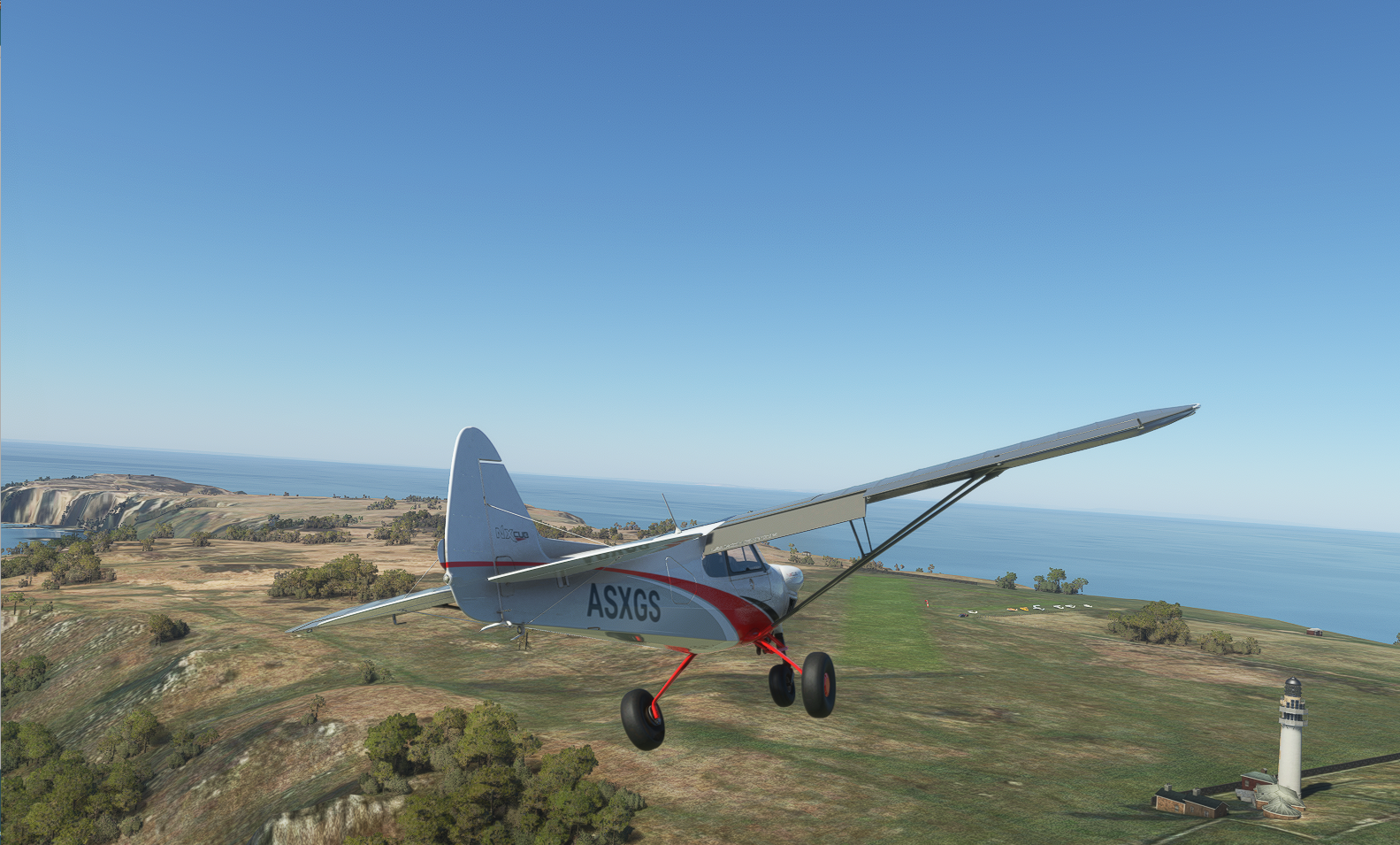Flying from Lundy Airfield
Thursday, April 28th, 2022 at Lundy Airfield.
If you visit North Devon from Bideford to Woolacombe, in good weather, you should see Lundy. It's a small island about 25 miles off the coast. You can get a boat there from Bideford, but why not fly into Lundy Airfield.
Come along for a Lundy Island tour..
 Open in a new tab to enlarge. |
 Open in a new tab to enlarge. |
 Open in a new tab to enlarge. |
Some of the History
Lundy is famous for its seabirds, especially for the puffins which gave the island its name (Lundy is Norse for Puffin Island). A few breeding pairs of these birds remain. There is also a wealth of other animals and plants both on the island and in the waters around.
The Island has been inhabited for at least 3,000 years - archaeological investigations have discovered considerable traces of Bronze and Iron Age settlements. The Dark Ages, following the fall of the Roman Empire, left Lundy shrouded in myth and legend.
Lundy is now owned by the National Trust who have leased it to the Landmark Trust who maintain and run the Island and to keep it as a tranquil and unaffected place for the Islanders and visitors to share and enjoy.
The airstrip on Lundy dates back to at least 1934. Aircraft such as a DH84 Dragon (which lost its undercarriage on that threshold wall), GAL Monospar and Short Scion of Lundy & Atlantic Coasts Air Lines flew to Lundy from an airfield at Barnstaple – a site that’s now within the boundary of Chivenor.
Tourist flights, post-WWII, flew to the Island by Auster, but apart from some Flying Farmers’ Association events in the 1960s/1970s there was relatively little use of the strip, until a team of pilots and enthusiasts changed that with a plan for a fly-in at the turn of the century.
Every year since then, there has been a fly-in by the Aeronca Club.
Get the Lundy upgrade from AMB here.
Local Landmarks
Apart from the rugged coast, there is the Lundy Harbour, the South Lighthouse with a helicopter landing pad next to it, a Victorean Church, the North Lighthouse, and the old lighthouse, close to the airfield.
The Aircraft - Clubcrafters NXCub
General characteristics
- Crew: one
- Capacity: one passenger
- Length: 23 ft 10 in (7.26 m)
- Wingspan: 34 ft 4 in (10.46 m)
- Height: 8 ft 4 in (2.54 m)
- Fuel capacity: 49 U.S. gallons (190 L; 41 imp gal)
- Powerplant: Lycoming O-360-C1 four cylinder, air-cooled, 180 hp (130 kW)
- Propeller: 2-bladed Hartzell constant speed propeller
Performance
- Maximum speed: 153 mph (246 km/h, 133 kn)
- Cruise speed: 145 mph (233 km/h, 126 kn)
- Stall speed: 39 mph (63 km/h, 34 kn)
- Never exceed speed: 167 mph (269 km/h, 145 kn)
- Range: 800 mi (1,300 km, 700 nmi)
- Endurance: 6 hours
- Service ceiling: 14,000 ft (4,300 m)
- Rate of climb: 1,500 ft/min (7.6 m/s)
Do you have narrated YouTube videos of simulator flights from Cornwall airfields? Send me a link or post it in the comments. I'll add those I like to this site.

Add new comment